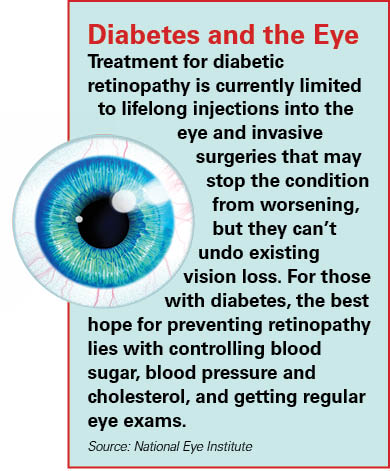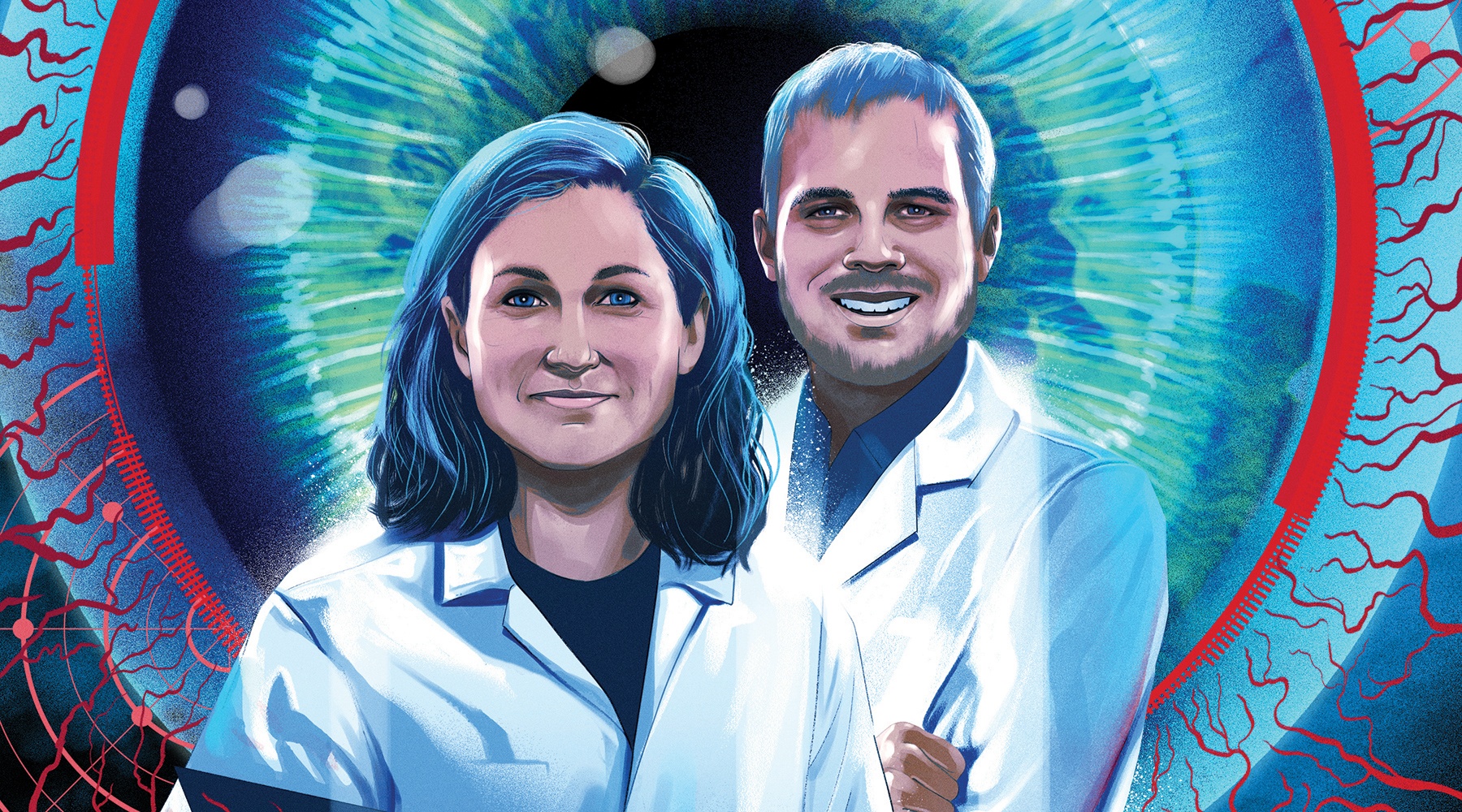The calls and emails came almost immediately.
Within days of publishing a study in the Proceedings of the National Academy of Sciences about a novel compound that could reverse vision loss in premature infants and adults with diabetes, Dr. Courtney Griffin’s inbox and voicemail began to fill. The messages came from Michigan, Washington and Texas, and as far as Chile and Germany. Sent on behalf of relatives, themselves, and even a family pet, they all sought more information on the findings from Griffin’s lab.
 Laboratory research doesn’t typically trigger direct outreach from the public, says Griffin, who holds the Scott Zarrow Chair in Biomedical Research at OMRF. “I don’t get contacted about our work on chromatin” – the material that makes up chromosomes. “This just shows how desperate people are to see.”
Laboratory research doesn’t typically trigger direct outreach from the public, says Griffin, who holds the Scott Zarrow Chair in Biomedical Research at OMRF. “I don’t get contacted about our work on chromatin” – the material that makes up chromosomes. “This just shows how desperate people are to see.”
Griffin and Dr. Chris Schafer, a postdoctoral researcher in her lab, study how blood vessels develop. When tiny vessels grow out of control in our retinas, it causes eye disorders like diabetic retinopathy and the retinopathies found in premature infants. The thick webs of retinal vessels can lead to vision loss and, ultimately, blindness.
In experiments with newborn mice, Schafer observed that levels of certain cellular proteins crashed as the animals experienced normal blood vessel loss in the eye. What if these proteins were like a switch that controlled vessel growth, one that could be flipped to treat conditions like retinopathies?
Testing the hypothesis involved significant collaboration from partner institutions, no small task amid a pandemic. When it came time to assess the outcome, Schafer used a special microscope to examine the rodents’ retinas.
After seeing the results from the first mouse, Schafer could hardly contain his excitement. “I immediately wanted to get to the second mouse and the third mouse to make sure I wasn’t going to be heartbroken.”
He wasn’t. He found the experimental compound he and Griffin had used on the mice had apparently flipped a molecular “off” switch, causing diseased retinal vessels to regress and die. Even more encouraging, Griffin says, the compound only impacted abnormal blood vessels, sparing the healthy vessels in the eye.
The researchers are now working toward studying the compound in models of adult diseases. “We would love to help all the people who are emailing me,” says Griffin.
A long road lies ahead before researchers can test the experimental compound in humans. But for the more than 7 million Americans with diabetic retinopathy, Griffin knows she and Schafer must keep going.
Illustration by Jonathan Bartlett
—
Read more from OMRF’s 2020 Annual Report
A Year of Challenges
A Homecoming of Sorts
Honoring a Recovered Texan
An Anti-Aging Pill?
Old Drug, New Tricks
From Bedside to Bench
Healing Broken Hearts
How 2020 Changed Science



